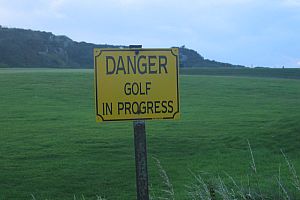Summer Water Safety for Kids

For lots of kids, there aren’t many activities in the summer that are more fun than swimming, whether it’s in a pool, lake, or ocean. And while it’s great exercise for your children to be spending a lot of time in and around the water, there are (of course) dangers that they should be aware of. As a parent, you undoubtedly want to keep your child safe in the water this summer, so here are a handful of simple precautions to take and instructions to give your children before they put a toe in the water.
Explain to your children the importance of water safety. Make sure they know and understand the following:
- That they must always stay in the line of vision of a supervisor, be it you, a caretaker, or a lifeguard.
- That they must obey all rules of the place they are swimming—for example, if a public pool says “No Diving,” then your kids should absolutely not dive. Remind them to respect the regulations laid down by lifeguards or other authority figures.
- That they should never, ever swim unattended until they have proven they thoroughly understand the rules and dangers of the water. This rule applies only to older children, and swimming in the ocean alone is not acceptable, no matter how careful your child is—there are too many variables and dangers that even the most cautious swimmer cannot avoid, such as riptides and undertows.
It’s a good idea for your child to take a water safety course with a certified water safety instructor. Check your local YMCA if you don’t know where to start.
If you have a residential pool, there are some essential safety precautions that you and your children must take.
- When the pool is not in active use and there are no adults present to supervise, it is important that you set up a barrier so that young children do not fall in or use the pool without permission. A gate with a lock around the entirety of the pool is one way to accomplish this. The Red Cross recommends that you “Ensure that pool barriers enclose the entire pool area, are at least 4-feet high with gates that are self-closing, self-latching and open outward, and away from the pool. The latch should be high enough to be out of a small child’s reach.”
- You should teach your child to always, always ask permission to use the pool. This can cut way down on unauthorized use of the pool, and thus cut way down on the risks involved with having a pool with children in the house.
- For younger children who don’t quite have the hang of swimming on their own, water wings or a life jacket are a must, even if an adult is supervising.
- When you are supervising, pay close attention. org advises: “Put the cell phone away, forget about all the other things you have to do and give young children 100% of your attention when they are near or around water.”
- Learn CPR. This is something every parent should do regardless of whether their kids swim or not; it’s simply a responsible thing to learn, and it could save your child or someone else’s life—and that makes learning it worth more than gold.
 For many people, summertime just isn’t summertime without a barbecue! It’s a generations-old cultural phenomenon that combines three things American families love—food, family and fun!
For many people, summertime just isn’t summertime without a barbecue! It’s a generations-old cultural phenomenon that combines three things American families love—food, family and fun!


 America’s roads have become far safer across the past three decades. By just about any measure, travelers are much less likely to be injured or killed in a motor vehicle accident than they were in the late 1980s and early 1990s. And this is true even though we’re driving more miles each year!
America’s roads have become far safer across the past three decades. By just about any measure, travelers are much less likely to be injured or killed in a motor vehicle accident than they were in the late 1980s and early 1990s. And this is true even though we’re driving more miles each year!


 Headaches are one of the most common types of pain that people experience on a regular basis. Researchers estimate that nine out of ten Americans suffer from headache pain at some point. 95% of women and 90% of men have had at least one in the past 12 months. And for about 45 million of us, those headaches are chronic.
Headaches are one of the most common types of pain that people experience on a regular basis. Researchers estimate that nine out of ten Americans suffer from headache pain at some point. 95% of women and 90% of men have had at least one in the past 12 months. And for about 45 million of us, those headaches are chronic.